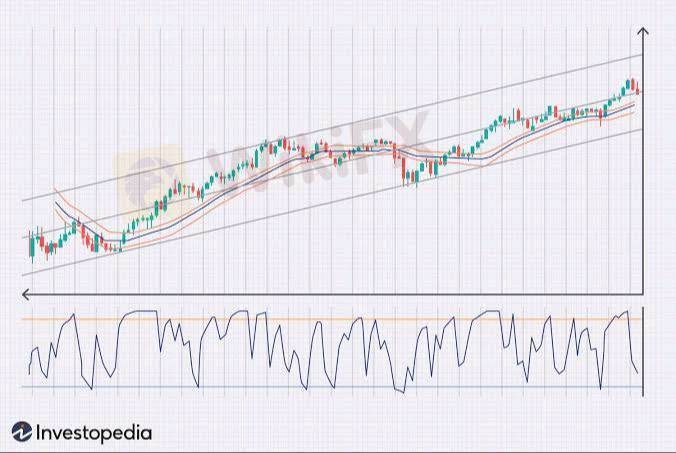
2025-04-28 11:52
IndustryMeasuring central bank policysurprise effects
#CurrencyPairPrediction
Measuring central bank policy surprise effects is crucial for understanding how financial markets, including Forex, react to monetary policy decisions. A "surprise" occurs when the central bank's action or communication deviates from what the market had widely anticipated. Quantifying these surprises allows analysts to isolate the impact of the unexpected component of policy changes.
One common method involves analyzing high-frequency financial market data around the time of central bank announcements. For instance, changes in short-term interest rate futures or government bond yields within a narrow window (e.g., 30 minutes) around the announcement are often used as proxies for the policy surprise. The idea is that these instruments are highly sensitive to monetary policy expectations, and any unexpected policy move will be quickly reflected in their prices.
Another approach involves surveying market participants before policy announcements to gauge their expectations. The difference between the actual policy outcome and the median expectation from the survey is then considered the policy surprise. This method directly measures the extent to which the central bank's action deviated from market consensus.
More sophisticated techniques aim to disentangle the policy surprise from the information effect that often accompanies central bank communication. Some models analyze the co-movement of interest rates and stock prices around announcements. A surprise policy tightening typically leads to higher interest rates and lower stock prices, while a central bank information shock (e.g., positive communication about the economic outlook) might lead to both rising.
In the context of Forex, measuring policy surprises is vital because unexpected changes in interest rates or monetary policy stances can trigger significant and immediate currency movements. For example, a surprise interest rate hike could lead to a strengthening of the domestic currency as it becomes more attractive to foreign investors. Conversely, an unexpected dovish signal might weaken the currency. By quantifying these surprises, traders and analysts can better understand the drivers of currency fluctuations and refine their forecasting models. Event study methodology is often employed to analyze the impact of these surprise announcements on asset prices, including exchange rates, over a short-term event window.
Like 0
nako3959
Trader
Hot content
Industry
Event-A comment a day,Keep rewards worthy up to$27
Industry
Nigeria Event Giveaway-Win₦5000 Mobilephone Credit
Industry
Nigeria Event Giveaway-Win ₦2500 MobilePhoneCredit
Industry
South Africa Event-Come&Win 240ZAR Phone Credit
Industry
Nigeria Event-Discuss Forex&Win2500NGN PhoneCredit
Industry
[Nigeria Event]Discuss&win 2500 Naira Phone Credit
Forum category

Platform

Exhibition

Agent

Recruitment

EA

Industry

Market

Index
Measuring central bank policysurprise effects
 Malaysia | 2025-04-28 11:52
Malaysia | 2025-04-28 11:52#CurrencyPairPrediction
Measuring central bank policy surprise effects is crucial for understanding how financial markets, including Forex, react to monetary policy decisions. A "surprise" occurs when the central bank's action or communication deviates from what the market had widely anticipated. Quantifying these surprises allows analysts to isolate the impact of the unexpected component of policy changes.
One common method involves analyzing high-frequency financial market data around the time of central bank announcements. For instance, changes in short-term interest rate futures or government bond yields within a narrow window (e.g., 30 minutes) around the announcement are often used as proxies for the policy surprise. The idea is that these instruments are highly sensitive to monetary policy expectations, and any unexpected policy move will be quickly reflected in their prices.
Another approach involves surveying market participants before policy announcements to gauge their expectations. The difference between the actual policy outcome and the median expectation from the survey is then considered the policy surprise. This method directly measures the extent to which the central bank's action deviated from market consensus.
More sophisticated techniques aim to disentangle the policy surprise from the information effect that often accompanies central bank communication. Some models analyze the co-movement of interest rates and stock prices around announcements. A surprise policy tightening typically leads to higher interest rates and lower stock prices, while a central bank information shock (e.g., positive communication about the economic outlook) might lead to both rising.
In the context of Forex, measuring policy surprises is vital because unexpected changes in interest rates or monetary policy stances can trigger significant and immediate currency movements. For example, a surprise interest rate hike could lead to a strengthening of the domestic currency as it becomes more attractive to foreign investors. Conversely, an unexpected dovish signal might weaken the currency. By quantifying these surprises, traders and analysts can better understand the drivers of currency fluctuations and refine their forecasting models. Event study methodology is often employed to analyze the impact of these surprise announcements on asset prices, including exchange rates, over a short-term event window.
Like 0
I want to comment, too
Submit
0Comments

There is no comment yet. Make the first one.

Submit
There is no comment yet. Make the first one.